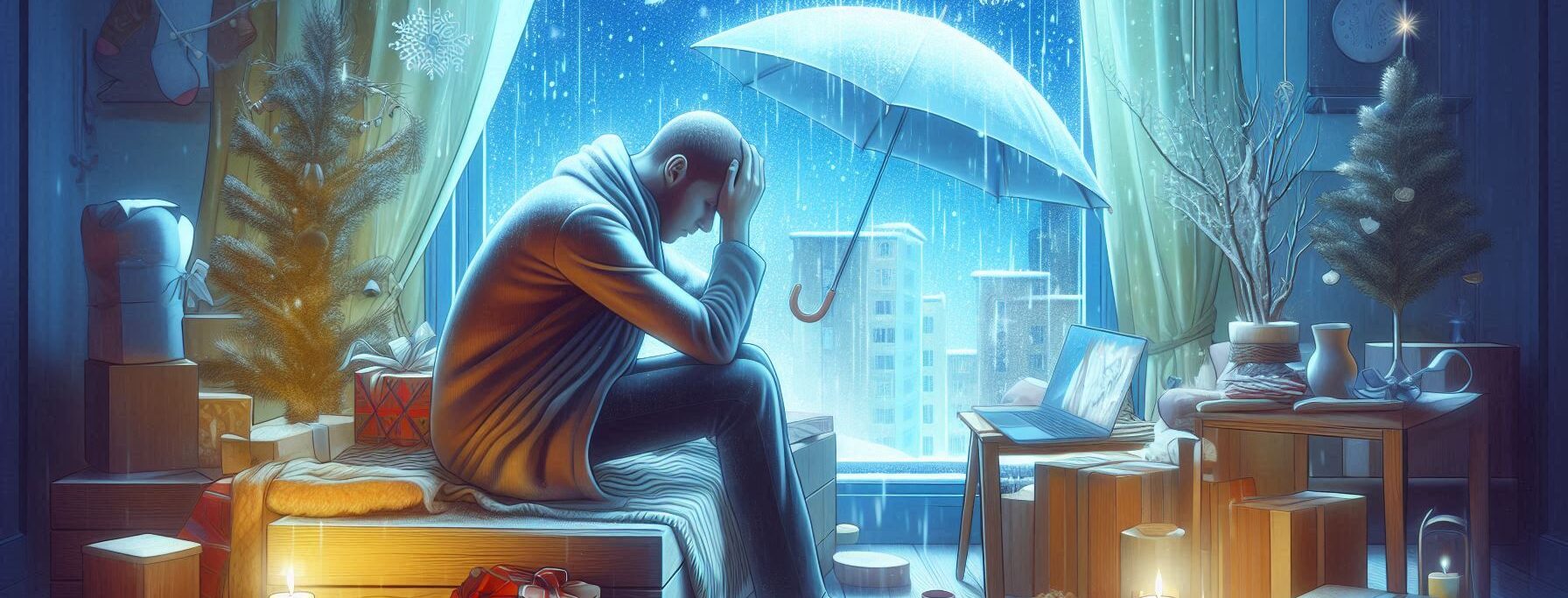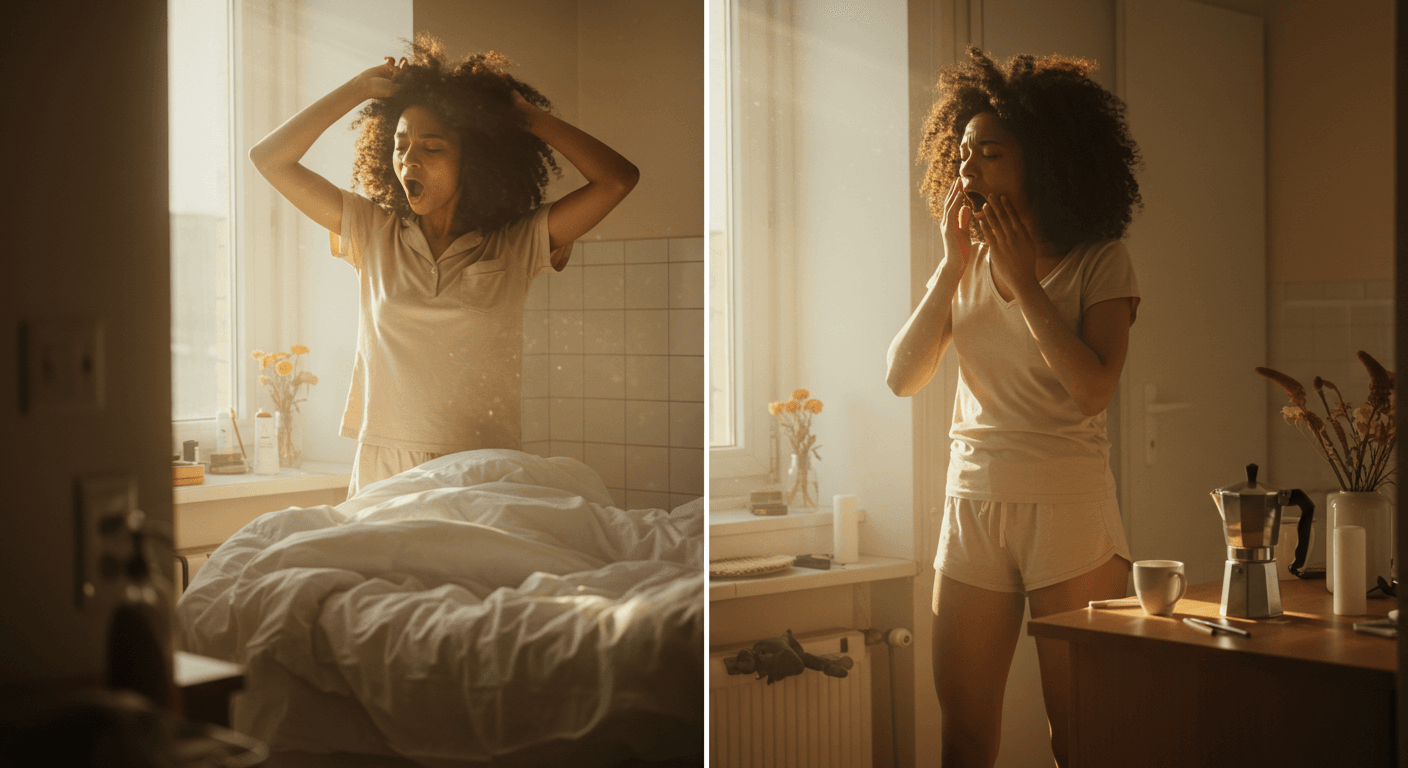Please Note: This post may contain affiliate links. If you click one of them, we may receive a commission at no extra cost to you. As an Amazon Associate, I earn from qualifying purchases.
Ah, winter! The season where the sun decides to take a vacation, leaving us in a perpetual state of grayness.
If you’ve ever felt like a hibernating bear during these chilly months, you might be experiencing something called Seasonal Affective Disorder, or SAD. Yes, it sounds like the name of a sad puppy movie—but trust me, it’s much more complicated than that.
So what exactly is SAD? Well, imagine if your mood were like a thermostat that only works in summer mode.
When the days get shorter and the weather turns frosty, some people find their mood plummeting faster than my hopes of seeing spring anytime soon. Let’s break down this phenomenon with all the cheerfulness of an overcast day!
Top Takeaways and Key Concepts
- Seasonal Affective Disorder (SAD) is a type of depression that occurs during fall and winter.
- Reduced sunlight disrupts circadian rhythms, serotonin, and melatonin, contributing to SAD symptoms.
- Common symptoms include fatigue, irritability, oversleeping, difficulty concentrating, and social withdrawal.
- Effective treatments include light therapy and professional counseling to manage mood and sleep patterns.
- Coping strategies like regular exercise and maintaining social connections can reduce SAD’s impact.
Summary of This Article
This article explains Seasonal Affective Disorder (SAD), a form of depression triggered by shorter daylight during fall and winter. It highlights biological causes, including disrupted circadian rhythms and altered neurotransmitter levels, and outlines common symptoms such as fatigue, irritability, oversleeping, and social withdrawal. Treatment options include light therapy and therapy sessions, while coping strategies like exercise and staying socially connected can help mitigate symptoms. The article emphasizes understanding, proactive care, and embracing seasonal changes to manage SAD effectively.
What Is Seasonal Affective Disorder?

First off, let’s clarify what we mean by SAD. It’s not just feeling blue because you stepped outside into an arctic blast; it’s a type of depression that occurs at certain times of the year—most commonly in fall and winter when daylight is scarce.
You know those days when you wake up and feel like you’re stuck inside someone else’s gloomy dream? That could be SAD knocking on your door.
Interestingly enough, experts believe that changes in light exposure can mess with our internal clocks (also known as circadian rhythms).
This disruption can lead to symptoms like fatigue, irritability, and cravings for carbs—because who doesn’t want to eat an entire loaf of bread while wrapped in a blanket? I mean really!
Symptoms: More Than Just Feeling Gloomy
Now let’s talk about symptoms. They can vary from person to person but generally include feelings of hopelessness or worthlessness that seem to come out of nowhere—like that one sock that always goes missing in the laundry.
You might also experience trouble sleeping or oversleeping (which is basically taking “napping” to Olympic levels), difficulty concentrating on anything other than how cold it is outside, and withdrawal from social activities.
To be fair, I once tried hosting a “Let’s Celebrate Winter” party during January and ended up with three guests who spent most of their time staring blankly at each other while sipping lukewarm cocoa.
So, if you’re feeling less social during these months, don’t worry—you’re not alone!
Causes: Blame It on Biology
Speaking of loneliness—let’s explore what causes this seasonal sadness. One theory suggests that reduced sunlight affects serotonin levels—the neurotransmitter responsible for happiness—and melatonin production—which regulates sleep patterns.
Essentially, less sunlight equals more time for us to contemplate life choices while wearing fuzzy socks.
By the way, genetics may play a role too! If your family tree has branches laden with seasonal blues (and maybe even some grumpy bears), you might be more susceptible yourself. But don’t panic; understanding why you feel this way can sometimes help alleviate those heavy feelings.
Treatment Options: Brightening Up Your Day
So what do we do about this pesky disorder? Thankfully there are several treatment options available! One popular method involves light therapy—exposing yourself to bright artificial lights designed to mimic natural sunlight. Think of it as your personal sun lamp without having to relocate to Florida permanently.
Then again, therapy can also work wonders! Talking through your feelings with a professional can help clear away those clouds hanging over your head—or at least give you tools for dealing with them better than simply binge-watching cat videos (which I still recommend occasionally).
Coping Strategies: Bringing Sunshine Indoors
While waiting for spring feels endless (seriously—it should come with an estimated delivery date), there are some coping strategies worth trying out!
Regular exercise is key—not only does it release endorphins (the happy hormones) but it also gets your blood pumping instead of sitting stagnant under blankets all day long.
Also consider keeping up social connections—even if it’s just through video calls or group chats filled with memes about how miserable winter is together! Honestly speaking about our experiences helps reduce isolation which often amplifies depressive symptoms.
Final Thoughts: Embracing Every Season
In conclusion—and here comes my final pitch—I think embracing every season for what it brings will ultimately make navigating through SAD easier.
Sure, winter means fewer sunny days and more layers than an onion—but it also offers cozy nights by the fire and hot chocolate galore!
Next time someone mentions feeling down during winter months remember they might just need some extra sunshine—whether literal or metaphorical—to brighten their spirits back up again!
Suggested Resources:
Understanding Seasonal Affective Disorder
https://www.nimh.nih.gov/health/statistics/seasonal-affective-disorder
Seasonal Affective Disorder – Overview
https://www.mayoclinic.org/diseases-conditions/seasonal-affective-disorder/symptoms-causes/syc-20353232
Light Therapy for Seasonal Affective Disorder
https://www.psychologytoday.com/us/blog/the-moment-youth/201911/light-therapy-seasonal-affective-disorder
Frequently Asked Questions
What is Seasonal Affective Disorder (SAD)?
SAD is a form of depression that appears during fall and winter, often triggered by reduced sunlight and changes in circadian rhythms.
What causes SAD to develop?
Decreased sunlight affects serotonin and melatonin levels, disrupting mood and sleep patterns. Genetics and sensitivity to light changes can also contribute.
What are the most common symptoms of SAD?
Symptoms include fatigue, irritability, oversleeping, difficulty concentrating, cravings for carbs, and withdrawing from social activities.
How is SAD diagnosed?
A healthcare professional evaluates symptoms, seasonal patterns, and duration to determine whether they meet the criteria for seasonal depression.
What treatments help relieve SAD symptoms?
Light therapy, counseling, and in some cases medication can help regulate mood and improve daily functioning during darker months.
Are there lifestyle habits that improve SAD?
Regular exercise, getting outside during daylight hours, maintaining social connections, and keeping a consistent sleep schedule can ease symptoms.
Can SAD go away on its own?
Symptoms often improve with the return of longer daylight hours, but treatment and coping strategies can significantly reduce the seasonal impact.

Kevin Collier is a passionate mental health advocate and writer for SadFAQ.com, where he explores the complexities of depression and mental well-being. With a deep understanding of mental health challenges, Kevin provides compassionate insights and practical advice to help individuals navigate their journeys toward healing. His articles aim to destigmatize mental health issues, offering support and resources for those seeking to improve their emotional resilience. Committed to raising awareness and fostering open conversations, Kevin’s work empowers readers to prioritize their mental health and seek the support they deserve.




